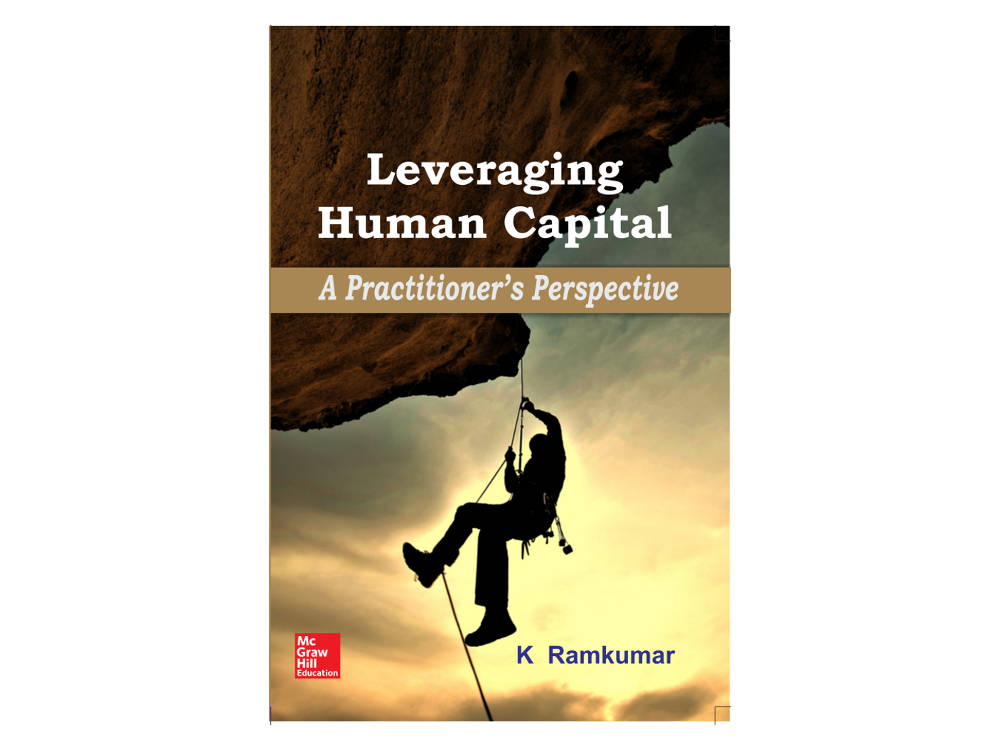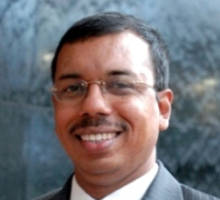Tour de France (TdF) is a gruelling 4,000-km, 23-day annual cycling marathon race. It was first organised in 1903. It is a test of human endurance, motivation, ability and mutual support when one’s own body and spirit are crumbling. This race was made famous in later years by Lance Armstrong. TdF is both a team competition and an Individual competition; the greater prestige is attached to the Individual who wins the race. Each team has 10 cyclists; the one with the best ability to win the tour is anointed the leader of the pack. The race involves gruelling mountain climbs, segments that require lightning speed and draining undulating roads. Each day beckons with a 200-km ride.
The team strategy is to identify strong team members for each stage to support and win the leader an advantage over the leaders of other teams, who too are gunning for the TdF winner’s title. Team members also ride hard, to destroy the strength, motivation and endurance of title contenders from rival teams. Legends such as Jacques Anquetil, Eddy Merckx and Bernard Hinault have won the race a record five times. Miguel Indurain later equalled these three. Lance Armstrong won seven times, but his record has been erased due to his use of performance-enhancing drugs.
Champions are not allowed to become, they win the title
This story is set in the year 1986, arguably the greatest TdF and the year in which a person from an English-speaking nation, Greg LeMond of the USA, won the race for the first time. Interestingly, the year before, French legend Bernard Hinault, nicknamed the Badger for his fierce perseverance and competitiveness, had won his fifth race, equalling the records of Anquetil and Merckx. Hinault and LeMond rode for the same team, La Vie Claire. LeMond had helped Hinault win his fifth title in 1985. It was widely believed that LeMond was being groomed as Hinault’s successor in the team. Hinault took keen interest in LeMond’s development.
After the 1985 win, Hinault publicly announced that he will ride to support LeMond the next year. To LeMond, Hinault was a hero; he was in awe of him. Much like in other sports, intra-team rivalries existed in TdF too, but it was exaggerated because the teams had riders from different nations. Leading up to July 1986, LeMond had taken it for granted that Hinault was not going to go for his sixth recordbreaking title because he had publicly announced that he would ride for LeMond’s victory. His promise notwithstanding, there was immense pressure from the French public on Hinault to take a shot at his sixth title.
On the eve of the race there were mixed expectations within and outside the team. Hinault kept mum on whether he was riding for himself or for LeMond. This added to the intrigue and tension. Hinault arrived in great form and the Badger came snarling out of the blocks—it was clear he was not going to ride to add up the numbers in his farewell year. On the night before the start of the race, Hinnaut promised to stir the pot so much that only the best would survive and that he was going to have fun doing it.
To cut a long story short, half way into the 23-day race, Hinault was leading. The TdF tradition is that the rider who is at the top of the cumulative overall timings table at the end of each day, wears the prestigious yellow jersey. On the first day on the Pyrenees, Hinault attacked the other riders and broke away to establish a 5 minute, 30 second lead over LeMond. His logic-defying attack struck fear in the hearts of all the title contenders. The Badger was known for these tactics. This kind of a lead is very often a title-winning lead, especially when it comes in the advanced stages of the tour. In the process, Hinault had destroyed the competitors and potential title aspirants such as Laurent Fignon, Urs Zimmermann and Robert Millar, who had been behind even LeMond.
Rivals from other teams were not the only ones left gasping from the Badger’s assault; LeMond too was in panic over his real intentions. To complicate matters, once the race started, Hinault refused to reveal his mind on whether he was racing for a win or to aid LeMond. Another attack and a gap of 5 more minutes would make it impossible for anyone to get ahead of Hinault on the time sheet.
Hinault attacked the next day too on the Pyrenees and set the cat among the pigeons. All the title aspirants went after him, trying to chase him down. They could not let him get an advantage of another 5 minutes. The mountain stages of the race sort out the men from the boys. When they push beyond their limits on the mountains, even sturdy and strong riders struggle to recover on the following days. Hinault was attempting to break the body and spirit of his rivals. The question was, what about his teammate LeMond? Was he trying to break him too? What happened to his promise? Why was he setting such a punishing pace on the climb, without checking on LeMond, especially if his objective was LeMond’s victory?
The media was split over ethnic loyalties. The French media egged Hinault on for his record-breaking win. The American media slammed him for breach of trust. However, it appeared that Hinault had miscalculated and at the end of this stage and day, he had squandered the lead, because as they say in TdF, he cracked on the Pyrenees. Rider after rider went past him, including Zimmerman, Millar and LeMond. The Badger fought back and retained his yellow Jersey, with a slim 40 second lead over LeMond. But by now LeMond had built up a strong lead over Zimmerman and Millar.
The ultimate test in TdF is the ride in the Alps. The king of the rides was the ride up the Alpe d’Huez with a gradient of 10-12 degrees. Usually, motorcycle engines protest going up such an incline. This was with two days to go for the race to finish. Leading up to this stage, LeMond had moved to the top of the table and had wrested the yellow jersey from Hinault. By now Hinault had taken Fignon, Luis Herrera, Millar and Zimmerman out of the equation; only he or his teammate LeMond could win the championship.
Hinault attacked once again. This time he asked LeMond to cling to him. He led him up, shielding him from the wind resistance and through the turns that are death traps on the Alps. The two together destroyed all competition. The moving account that has been retold a 100 times is about how Hinault safely shepherded LeMond through the rest of the treacherous climb, through the thronging partisan crowd on the road which was threatening to topple LeMond over. Hinault crossed the line first and moments later LeMond followed him across the line. The master and his protégé, with their hands clasped together and raised high, celebrated. Greg LeMond would be the champion and Bernard Hinault, the Badger would retire having ridden his last TdF, and on par with the two other five-time champions, Anquetil and Merckx. The Badger had his fun and Greg LeMond his championship. Hinault was contemptuous of his critics who questioned his tactics and even his intent.
Years later, Hinault broke his silence and said that he did not want LeMond to win because he let LeMond win. He said that champions are not allowed to become one; they beat other champions fair and square and become one. Hinault went on to say that he was true to both his assertions, that he will ride for LeMond’s win and also stir up the pot and have so much fun while decimating the entire competition for LeMond and team La Vie Claire. He asserted that the strongest and the best rider should win the TdF and LeMond had to prove to himself that he was stronger and better than Hinault and all the others. He pointed out that the day LeMond won the yellow jersey, he stopped attacking LeMond. It was only when LeMond earned the yellow jersey that he became worthy of being supported. Hinault asserted that to him this was the epitome of nurturing LeMond to discover his fullest potential. He will never ride for and let an unworthy champion to be crowned at the Champs-Élysées, no matter the promise. Hinault asserted that Greg LeMond was the strongest and the best rider in 1986 and hence, a worthy champion.
Nurturing is more than the soft and sensitive process
When I read the Hinault – LeMond saga of 1986, it struck me how management literature on nurturing fails to present the nuances. Much like the other aspects of business management, the process of nurturance has also been oversimplified. In this chapter, I intend to fall back on my personal experiences as a recipient of nurturance to explore its many nuances. First things first: the Hinault – LeMond saga helped me understand why nurturance is not only a soft and sensitive maternal process as it is often made out to be. Why challenge, testing, competitiveness and hard confrontation are important attributes of nurturance. Who can argue against the principle that nurturance should lead to worthy achievements, earned and not made available on a platter?
Kamath too exemplified this principle. Almost every engagement with him was challenging. It would appear that he was pushing you off the ledge. Once I asked him why he was combative in his engagements with his most favoured protégés. He smiled and posed a question back, as he always did: “Where do you discover a good batsman?” Being a diehard cricket fan, I told him, “On a difficult wicket, against a bowler who is threatening to run through the team.” I realised that he had got me to answer my question.
Setting up challenging contexts and unconditional investment provides the best nurturance
At that stage I had not read about Hinault. I realised that more than individuals, contexts provide the best nurturance. It has a lasting impact when we create challenging contexts and, like Hinault and Kamath, help people discover their hidden abilities, which they themselves at times are unaware of. This will not be possible when we put a protective net around people. In fact, the protective net actually becomes a limiting cage. This will also not be possible unless people go through serious pressure, like LeMond did. When the result is obvious, there is no learning or stretching. Uncertainty of result is the best releaser of hidden potential.
[This excerpt from ‘Leveraging Human Capital: A Practitioner's Perspective' by K Ramkumar has been reproduced with permission from McGraw Hill Education (India) Pvt Ltd.]

